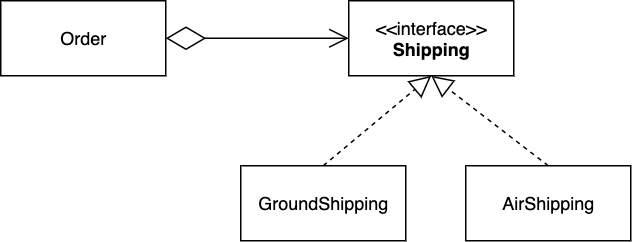Open-Closed principle
Principle
Classes should be open for extension but closed for modification.
What does that mean?! It essentially means design your application in a way to keep existing code from breaking when you implement new features..
- Open to extension means you can add new features.
- Closed to modification means the existing code (before adding a new feature) does not have to be modified when you added the new features.
In other words, new functionality does not require a rewrite of existing code. If you aren't modifying the existing code, you know you aren't breaking any of it.1
Let's be real for a moment: of course you will be modifying your code when you add new feature to your software. The principle says, design the code in a way that any future addition will require small modification of the existing code (so the risk of breaking existing features is minimized).
Okay! how? Well, one possibility is that all (the bulk of) the new functionality is contained in the newly added class(es). Here is a simple example: suppose you are building an application that involves online shopping with the following partial UML diagram:
Moreover, assume the methods in Shipping are implemented for ground shipping. Now you business expands to overseas and you want to add a new method of shipping (e.g. Air Shipping). How would you go about updating the software?
Well, one approach would involve updating the existing Shipping class to accommodate the new shipping method. For instance, a getShippingCost() cost method would be updated as:
This makes for bloated methods, increased complexity and higher risk to break the current functionality of Shipping class. The Open/Closed principle suggests to keep the Shipping class closed to modification but open to extension. A design that adheres to this principle could use inheritance:
In the above design, the AirShipping would override the implementation of getShippingCost accordingly. Since you are not changing anything in the Shipping class, you will not be breaking any of the features before the "Air shipping" was introduced.
Aside
A yet better design would look like this:

- As with the Single Responsibility Principle, this principle is applied to all software entities (classes, modules, functions, etc.)↩